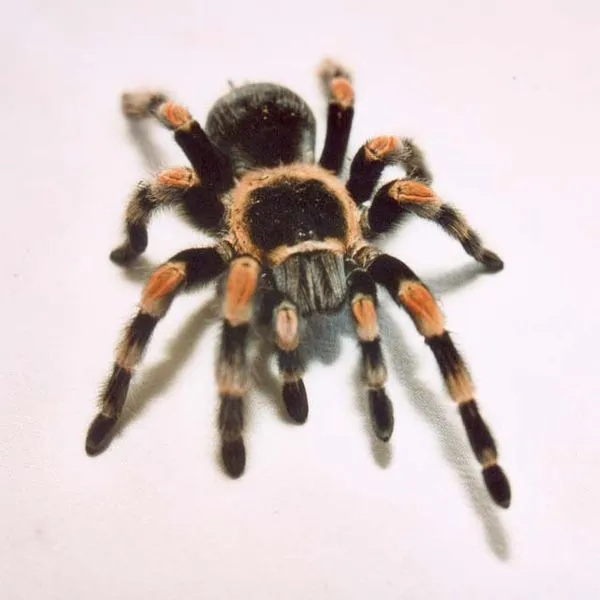The Exoskeleton of the Red Knee Tarantula
The red knee tarantula, a fascinating arachnid, boasts a unique and robust external structure known as an exoskeleton. This hard, protective outer shell is not only a defining feature of the species but also plays a crucial role in its survival. Understanding the exoskeleton is key to appreciating the remarkable adaptations that allow these creatures to thrive in their environment. The exoskeleton’s composition and function are essential elements to understanding the Red Knee Tarantula anatomy. This first of the five facts sets the stage for a deeper exploration of this amazing creature.
What is the Exoskeleton?
The exoskeleton is primarily composed of chitin, a complex polysaccharide that provides both rigidity and flexibility. Unlike the internal skeletons of mammals, the exoskeleton encases the entire body of the tarantula, including its legs, mouthparts, and the book lungs used for respiration. This external structure acts as a suit of armor, shielding the delicate internal organs from predators and environmental hazards. It also provides a framework for muscle attachment, enabling movement and various other activities. This feature helps to provide protection.
Purpose of the Exoskeleton
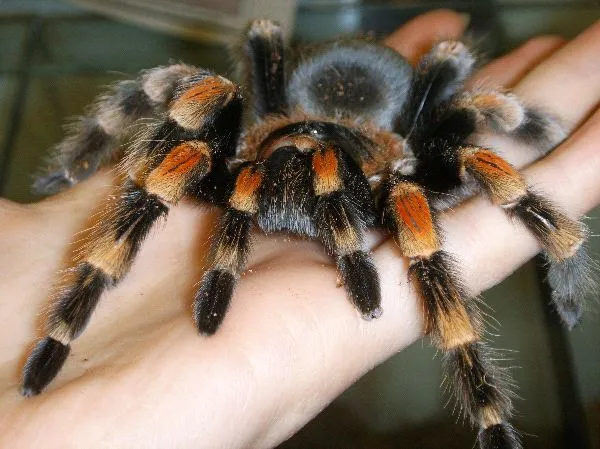
The exoskeleton serves multiple vital functions. Its primary purpose is protection, guarding the tarantula against physical harm. It prevents water loss, crucial for survival in arid environments, and provides structural support for movement and internal organ function. Additionally, the exoskeleton is a sensory interface, with specialized hairs and structures that detect vibrations, air currents, and chemicals, enabling the tarantula to perceive its surroundings. The tough covering also provides camouflage. These adaptations have been vital for tarantula survival.
Molting Process
As the red knee tarantula grows, it undergoes a process called molting, shedding its old exoskeleton to reveal a new, larger one underneath. This process is essential for growth because the exoskeleton cannot expand. Molting is a vulnerable time for the tarantula, as it’s soft and defenseless. The tarantula prepares for molting by forming a new exoskeleton beneath the old one. The old exoskeleton splits open, and the tarantula wriggles free. The new exoskeleton is initially soft but hardens over time. This cycle is a fascinating and risky part of the red knee tarantula’s life.
Internal Anatomy Overview
Beyond the exoskeleton, the internal anatomy of the red knee tarantula reveals further marvels of adaptation. The internal systems work in concert to ensure the tarantula’s survival and propagation. Understanding these systems provides valuable insight into the overall health and behavior of the tarantula. Let’s explore the key internal systems: the digestive, circulatory, respiratory, and nervous systems, all working in harmony. These systems are all interconnected to ensure the tarantula’s survival.
Digestive System
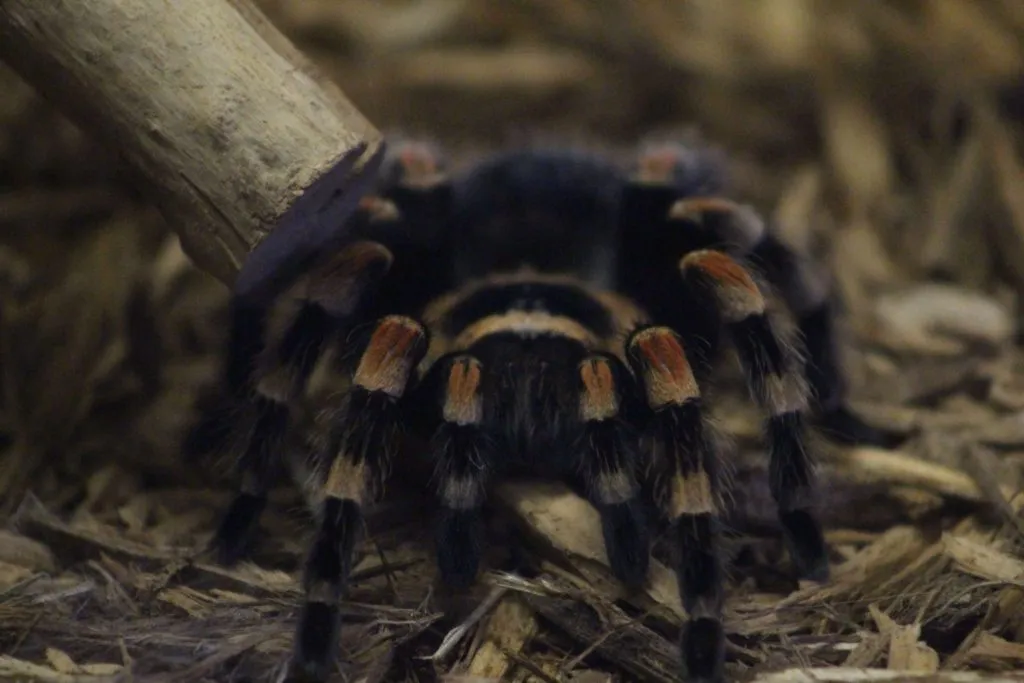
The digestive system of the red knee tarantula is uniquely adapted for consuming prey. The tarantula injects digestive enzymes into its prey, breaking down the internal tissues into a liquid form. The tarantula then sucks up this pre-digested meal. This external digestion method is a key adaptation. The digestive system includes a sucking stomach and intestines, where nutrients are absorbed. The entire process is specialized to maximize the use of resources.
How the Tarantula Eats
Red knee tarantulas are opportunistic hunters, feeding mainly on insects and other invertebrates. They use their chelicerae (fangs) to inject venom and immobilize prey. After subduing the prey, the tarantula uses digestive enzymes to break down the prey externally. They then suck the liquefied nutrients. This method of feeding allows tarantulas to consume a wide variety of prey without the need for chewing. The process is efficient and effective for nutrient extraction.
Circulatory System
The circulatory system of the red knee tarantula is an open system, meaning blood (hemolymph) circulates freely within the body cavity, bathing the internal organs. A central heart pumps the hemolymph through the body. The hemolymph carries nutrients, oxygen, and waste products. Unlike the closed circulatory systems of mammals, this open system is less efficient but sufficient for the tarantula’s needs. The hemolymph plays a crucial role in internal functions.
Respiratory System
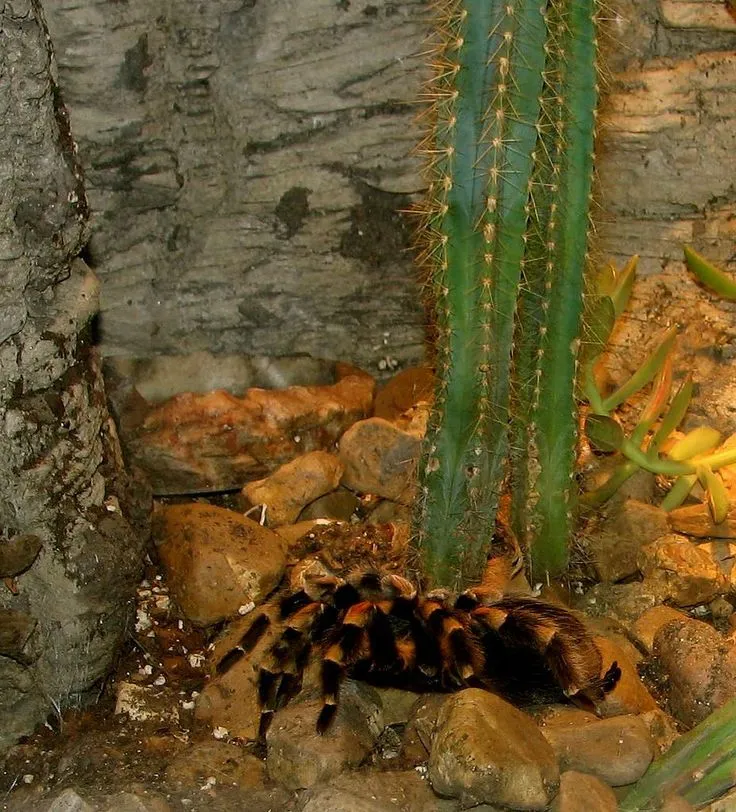
The red knee tarantula breathes through book lungs, unique respiratory structures located on the underside of the abdomen. These lungs consist of numerous thin, leaf-like plates that provide a large surface area for gas exchange. Hemolymph flows through these plates, absorbing oxygen from the air and releasing carbon dioxide. The book lungs are an efficient adaptation for respiration in terrestrial environments, enabling the tarantula to thrive in various habitats. These lungs work in tandem with the other internal organs.
Nervous System
The nervous system coordinates the tarantula’s activities, including sensory input, movement, and internal functions. It consists of a central nerve mass and numerous ganglia that act as control centers for different body regions. Sensory information is received by specialized receptors throughout the body and transmitted to the nerve mass for processing. The nervous system also controls muscle contractions, allowing the tarantula to move, hunt, and respond to stimuli. The nervous system is a highly specialized system for a tarantula’s needs.
Sensory Organs
The red knee tarantula relies on a range of sensory organs to perceive its environment. These organs enable the tarantula to locate prey, avoid predators, and navigate its surroundings. Sensory information is processed by the nervous system, allowing the tarantula to respond appropriately. The different sensory organs work together, giving the tarantula a comprehensive view of its surroundings.
Eyesight

The red knee tarantula has eight eyes, arranged in two rows. While the eyesight of tarantulas is not as acute as in some other animals, they can detect movement, light, and shadows. The eyes primarily serve to detect prey and potential threats. The arrangement of the eyes provides the tarantula with a wide field of vision. The limited but functional eyesight is a critical sensory tool.
Hairs and Sense of Touch
The entire body of the red knee tarantula is covered with sensory hairs, called setae. These hairs are highly sensitive to touch, vibrations, and air currents. They allow the tarantula to detect the presence of prey, potential predators, and changes in its environment. The hairs also help the tarantula navigate its surroundings. The sensitive hairs are essential to their survival.
Chelicerae and Pedipalps
The mouthparts of the red knee tarantula, the chelicerae and pedipalps, are crucial for feeding and other activities. They have unique structures and purposes, playing a significant role in the tarantula’s way of life. Understanding these mouthparts provides insight into the survival of the red knee tarantula.
Functions of Chelicerae
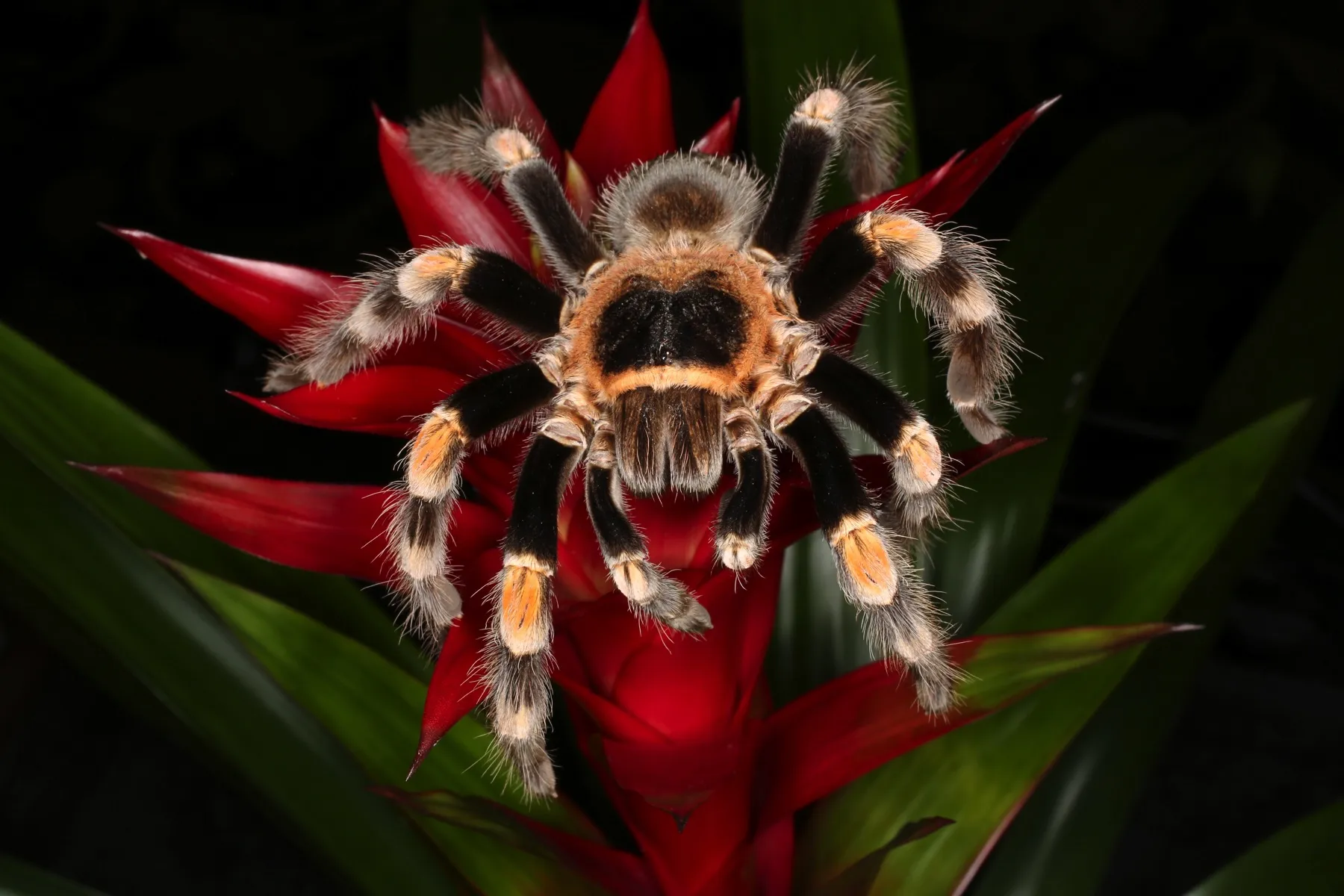
The chelicerae are the tarantula’s fangs. They are used to inject venom into prey, immobilizing them. The chelicerae also help to hold and manipulate food during feeding. The fangs are hollow and connected to venom glands. The chelicerae’s structure is essential for effective hunting. The chelicerae are also useful for defense.
Functions of Pedipalps
The pedipalps are located near the mouth. They are used to manipulate food, sense the environment, and in males, to transfer sperm during mating. The pedipalps are also used for defense and sensory input. These appendages are multipurpose tools for the tarantula. The pedipalps provide additional sensory information.
Reproductive System
The reproductive system of the red knee tarantula is essential for the continuation of the species. The reproductive systems of male and female tarantulas have key differences. Reproduction requires a complex interplay of biological processes. Let’s investigate the male and female reproductive systems.
Male Reproductive System
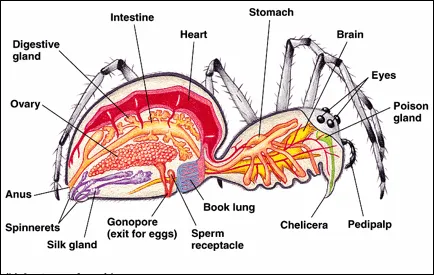
Male red knee tarantulas have specialized pedipalps used to transfer sperm to the female during mating. They produce sperm in the testes, which is stored in the pedipalps. Males construct a sperm web, then collect sperm into their pedipalps. The pedipalps are then used to transfer the sperm to the female during mating. The pedipalps are a critical tool for reproduction.
Female Reproductive System
Female red knee tarantulas have a spermatheca, where they store sperm received from the male. They lay eggs in an egg sac, which they protect until the spiderlings hatch. The female’s reproductive system is responsible for the production and protection of offspring. The female reproductive system is essential for population growth.
Conclusion
The red knee tarantula anatomy is a testament to the power of adaptation. From the protective exoskeleton to the specialized internal organs and unique mouthparts, every feature plays a critical role in the tarantula’s survival. Understanding these anatomical features provides insight into how these creatures thrive in their environment. The amazing design allows the tarantula to hunt and live in diverse habitats. The study of these features continually reveals the complexities of nature.
